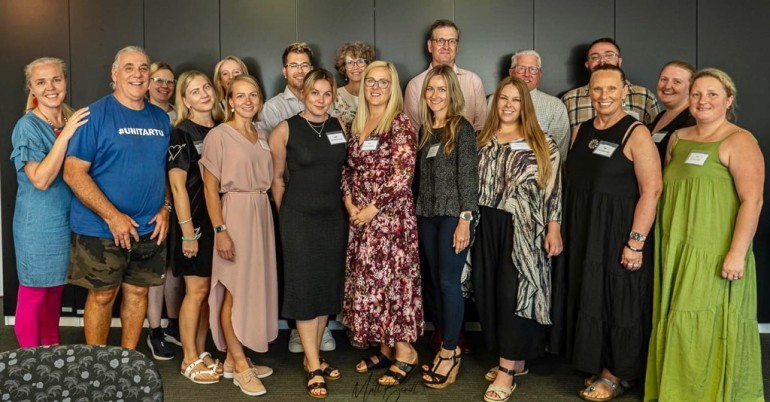Estonians in Australia are creating a new media platform
Last autumn, there was an Australian Media Future Forum event where people got together to create a strategy for launching the Australian Estonian Media Platform. Global Estonian talked about this with Melbourne-born Johanna Rivers, one of the team members of this project who also participated in the workshop.
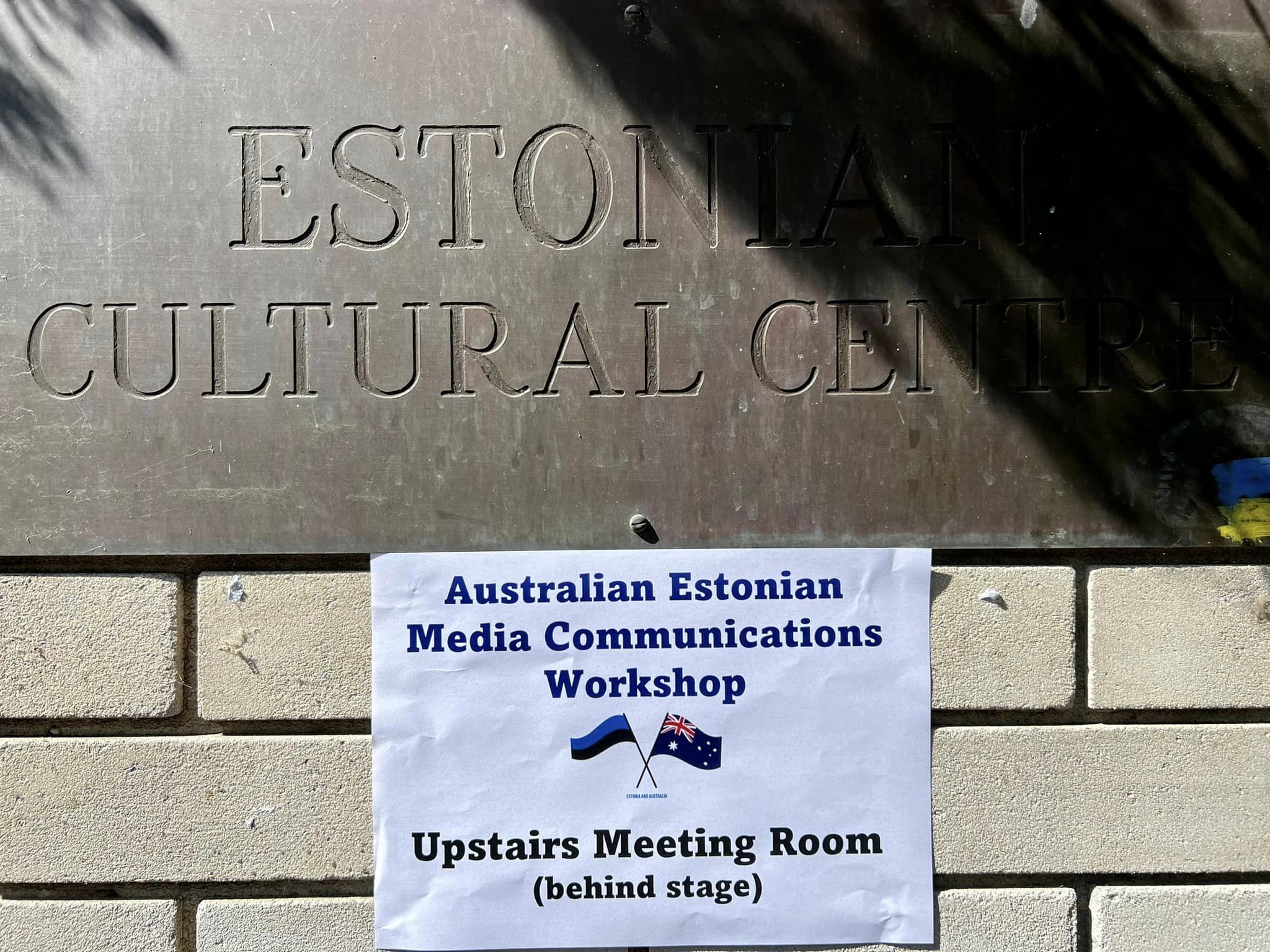
Last November, you conducted the Australian Media Future Forum, which aimed to do a workshop where a strategy and action plan will be created to launch the Australian Estonian Media Platform. How did the event go? Were there many people interested?
We thought the workshop was very successful. It really helped us to clarify why we Estonian Australians want to connect, what media and information we are looking for, and how we should go about it. The amount of discussion points was enlightening. For example, while some participants wanted a place to learn about Estonian myth and folklore, others had no interest in that, rather prioritising practical information about navigating the Australian job market. Overall, it was clear: there was a strong need for this event and it was worth pursuing.
In the lead-up to the workshop, we got quite a bit of interest; people of all ages, ranging from 20 to 70 years old, applied from across the country. It was challenging to select participants due to resource constraints, but we aimed for a representative sample from our communities. Ultimately, seventeen people from every state and territory (apart from Tasmania) attended, representing a broad mix of Australian-born Estonians and Estonian-born Australian citizens, residents, and backpackers.
Why did you feel the need to create an Australian media platform?
The workshop highlighted the desire among Estonians in Australia for a sense of community, timely access to news and events, and convenient information on essential matters like passport missions. Various groups have worked to this end, but still, feedback suggests that people feel “meh” about the solutions currently available. Something different has to happen.
Australia’s vast size and scattered population have long posed a challenge for maintaining nationwide contact among Estonians – a concern dating back to the WWII-era migration waves. Historically, the print newspaper Meie Kodu (launched in 1949) played an important role in connecting the community, but its closure in 2019 left a noticeable gap.
The internet and social media have both helped and complicated communication. While Facebook pages, email groups, and websites have sprung up in different pockets of the continent – which is a great sign of ongoing contact – they’ve also led to fragmentation and difficulties in accessing accurate and up-to-date information, forming some communication silos.
On top of all this, who Australian Estonians are today has changed since those early mass migrations. The needs and interests of a backpacker fresh from free Estonia are very different to the third-generation Australian of Estonian heritage.
In light of these challenges and aspirations, a consensus emerged at the workshop for the creation of a new media platform: a ‘one-stop-shop’ that can effectively connect-the-dots between our far-flung communities. The platform is envisioned to provide easily accessible news, events, and resources, while also fostering unity and keeping our cultural legacy alive. Essentially, a digital campfire around which we can gather and share our stories.
How did the development of the strategy and action plan for launching the Australian Estonian media platform go? What was the process like?
The development of the strategy and action plan was a collaborative and insightful process led by Mark Narustrang, an experienced Australian-Estonian strategist. What initially seemed like a daunting dream, became a fun and practical series of exercises.
Under his guidance, the workshop facilitated lively discussions focused on defining our common purpose, identifying beneficiaries, and outlining the potential solution. Despite differing opinions at times, Mark effectively guided us through the process, until we established a clear purpose for a platform, a viable business model, and a strategic approach. By the end, we were able to distil our ideas into five key strategic focus areas for 2024: governance, consolidation, content, funding, and buy-in.
Overall, getting such a clear overview of our project – what it is and will be, the big steps we need to take – was an incredibly valuable step along our journey, providing us with a solid foundation and a sense of direction as we move forward with the development of the media platform.
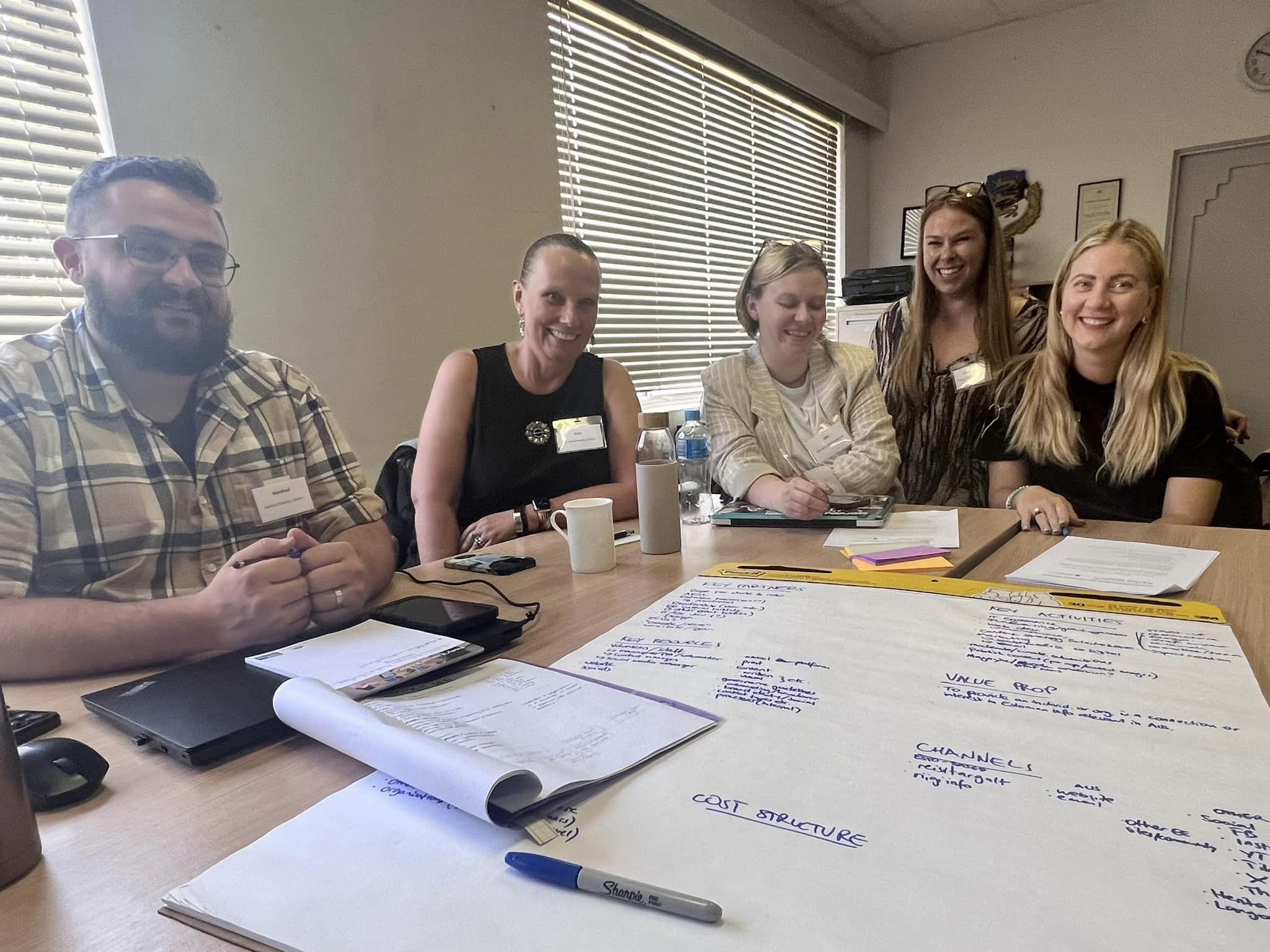
To date, how many volunteers have you found who want to get involved in the work of the media platform?
Up until recently, Kristi Barrow – the founder of the Estonians in Australia website and leader who initiated this media project – had essentially been working alone, managing the news website single-handedly (for the past 22 years!), setting up Google notifications for Australian-Estonian information and relying on contributors to send her content.
Since then, a very small handful of people have been actively involved in the project: primarily Kristi and myself, as well as the invaluable support from Mark Narustrang, Esmee Okamoto, and Imbi Semmelweis.
We just closed our first recruitment drive to find volunteers for our steering committee – one aspect of our governance strategy – this March 10th. We are pleased to have received applications from 20 people to join us! This result is promising.
With these applications in hand, we’re currently working on organising the teams. Once we have set up, we can focus on recruiting more people for our subcommittees – especially more media representatives to report on the activities of their society or organisation, and other content creators. We will also create a plan for the technical development of the platform, which will require some outsourcing to experienced developers.
Reaching out to your readers: for those interested in getting involved, we encourage you to get in touch (media@eesti.org.au). Whether you’re a seasoned professional or a passionate newcomer, there’s a place for you in our volunteer team.
Are they mostly Estonians or are there representatives of other nationalities among the volunteers?
Our volunteers are a mix of new Estonians and Australians with Estonian heritage – be it two Estonian parents or a single great-grandparent. Our “Estonianness” is what brings us together, but we take inspiration from other lineages and cultures too.
What will be the purpose of the Australian Estonian media platform? Who is this platform for?
At the moment, the defined purpose of the platform is as follows:
“To provide community information relevant to individuals or organisations in Australia that are interested in, or connected to, Estonia”
Looking ahead, we may consider broadening its mission to align with the ethos of past initiatives like Meie Kodu, which aimed to “keep Estonia alive in the hearts of expats.” But for now, our focus remains squarely on fulfilling this specific objective.
As for the platform’s intended audience, a simple answer is “Estonians in Australia”. However, the nuances are broader, including original displaced persons and their families, multi-generational Australians with Estonian heritage, Estonian-born individuals and families who have since become Australian citizens or residents, and new or potential arrivals from Estonia on non-permanent visas, such as backpackers. Moreover, the platform is intended for organisations related to any of these groups, such as parent groups, choirs, and even Global Estonian.
Ultimately, we envision the platform not just as a destination but as a tool that enables and empowers our community. This means a space where anyone with a connection to Estonian culture, regardless of background or level of involvement, can participate, contribute, and be part of our community in Australia and beyond.
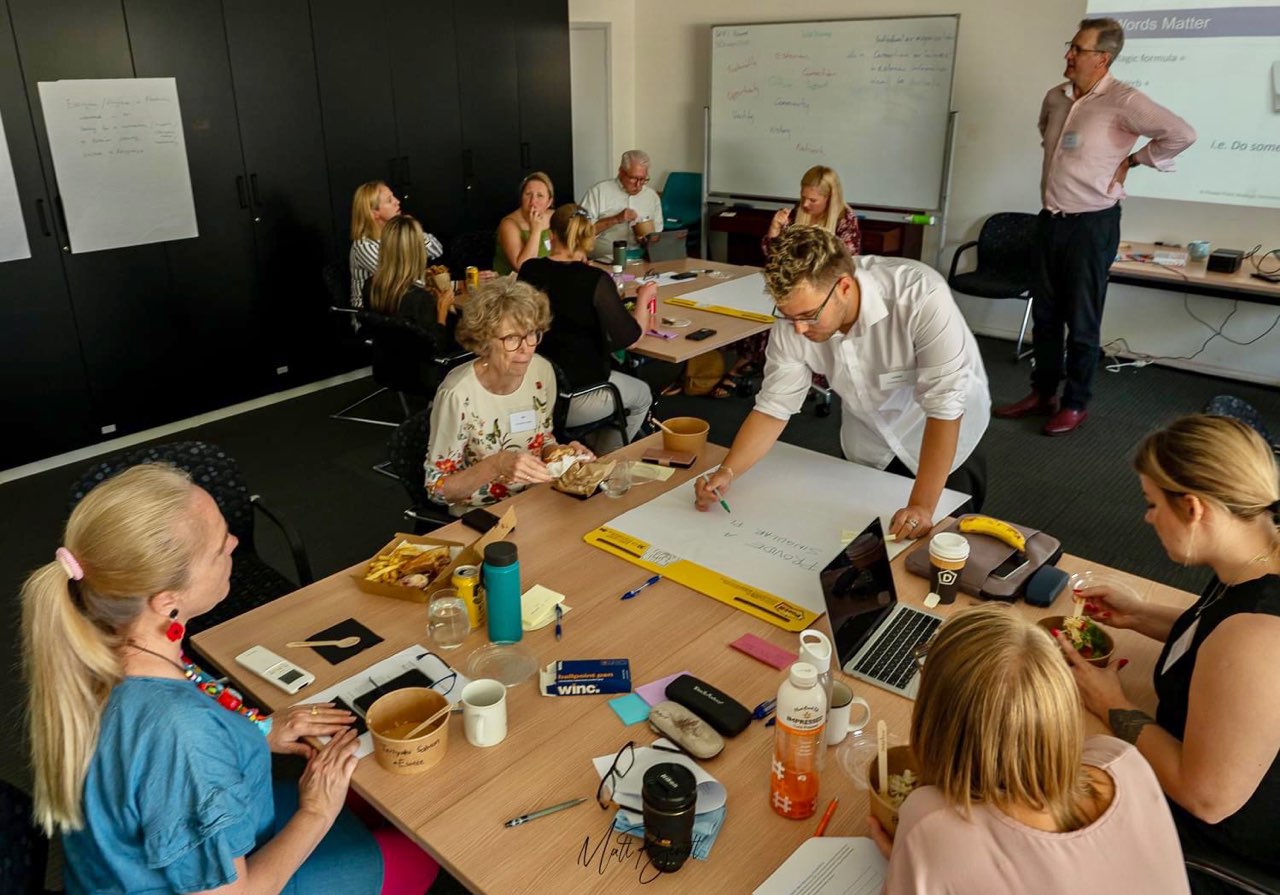
You applied for a grant from the Civil Society Endowment call for proposals to conduct the workshop. How easy or complicated was the grant application process?
Kristi Barrow answers this question:
It was a little difficult to submit an application, as it had to be written in Estonian. However, I found the easiest way to achieve this was to first write the application in English and then used Google Translate. I then also asked my mother to review the translation, and she made some small changes if necessary.
Only organisations could apply for this particular grant. So I needed to find a local Estonian-Australian organisation to help with my application. The Council of Estonian Societies in Australia (AESL) assist me apply.
The fund’s response time was very fast and we received feedback on our application quickly. I think our application was different from most as we weren’t creating a newspaper or website, but our goal was to take the time to truly understand the needs of the Australian community. Now that we’ve been through this we’ve also requested another grant to launch the new platform.
What is the size of the Australian community of Estonians?
There are around 12,000 self-identified Estonians in Australia, based on the latest census data – a number that seems to be growing. What this means in practice looks a little different.
The Estonian Archives in Australia has an article about the most recent Census in Australia:
The Estonian Australian population has increased 21% since the last census
The AESL 2023 booklet highlights seven city-based societies alongside various associations, language classes, and children’s play groups. The four biggest societies have just over 100 members each, while the fifth and sixth have about 15, and the seventh announced its closure – officially, at least. In total, that’s communities amounting to less than 1000 members.
The shrinking of our organised communities has been a topic of discussion over recent years. Signifying this trend, the Estonian house in Western Australia was previously sold, the Estonian house co-operative in Melbourne is on its way to being sold in favour of finding a smaller venue elsewhere, and some schisms have formed among other local societies and groups.
On the other hand, this year we saw a new generation of Estonians in Perth who launched EstWest, a cultural hub hosting popular events and fundraising for a new Estonian House. Interest in Eesti Päevad 2024 is growing, and this media project has attracted attention in every one of our states and territories. And many travellers from Estonia continue to build their homes in Australia, even if only for a few years.
So how big is the Australian community of Estonians? We have the potential to live up to being the fifth largest Estonian diaspora in the world, but its realisation all depends on our own ability and desire to get together and keep it going.
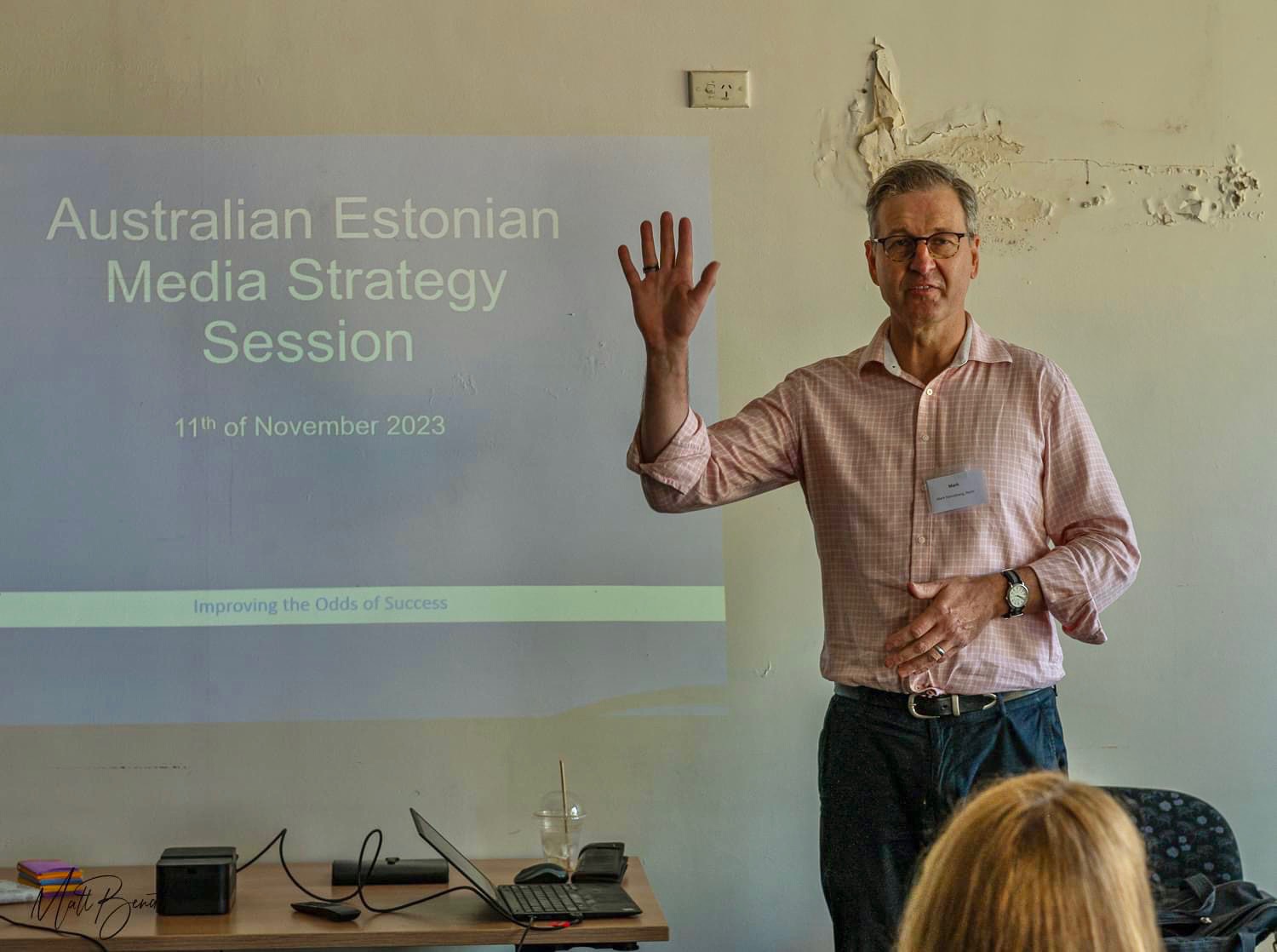
So far, what have been the main information channels that local Estonians use to search for information?
According to the survey we ran late last year, most people used Facebook – about 60% of respondents – to search for information. This was followed by the Estonians in Australia website and newsletter, used by about 40% of respondents, and then personal email.
The majority of visits (89%) to the Estonians in Australia website have come from search engines, followed by about 6.5% by Facebook. So it’s a bit of a mix of googling, scrolling through social media, and sharing email addresses when you meet the right people.
We hope to do more surveys in the future, especially to capture a wider range of respondents, as well as improve our data analytics to better our understanding.
According to your vision, when will the Australian Estonian media platform be ready?
We decided to build on top of existing infrastructure rather than reinvent the wheel. Namely, we will use the Estonians in Australia website as our base and supercharge it.
This decision was made partly thanks to Mark’s comment during the workshop, where he reminded us of the Estonian adage: “Kus kolm eestlast, seal viis arvamust” — where there are three Estonians, there are five opinions. The same seems to be true for new associations, new websites, and so on.
We intend to release the first version of the redesigned website by the end of this year, publishing small iterations as we go. By December 2024, we hope our visitors will be excited to see the transformations that have taken place. This will include a new look, structure and content pages – such as an improved presentation of Estonian communities in Australia and information for travellers.
It will also involve developing both a front-end (what the visitor sees) and back-of-house (what we do behind the scenes) structure that makes it easier for individuals, societies, and organisations to publish news and events. Since we’re entirely a volunteer-run project, it will be really important to make this as simple and smooth as possible to encourage participation and get more people on board.
Based on the success of this year and community feedback, we will review our strategy and action plans for 2025 at the end of the year. Like the Estonian community in Australia itself, we expect the media platform will evolve and adapt over time.
When the vanake (elder) emerges from Ülemiste Lake
(or a crevice in Uluru?), we will tell him “it is not finished”.
We are looking forward to realising the full potential of this project and would like to thank our dedicated volunteers, contributors, and Global Estonia for their support.

